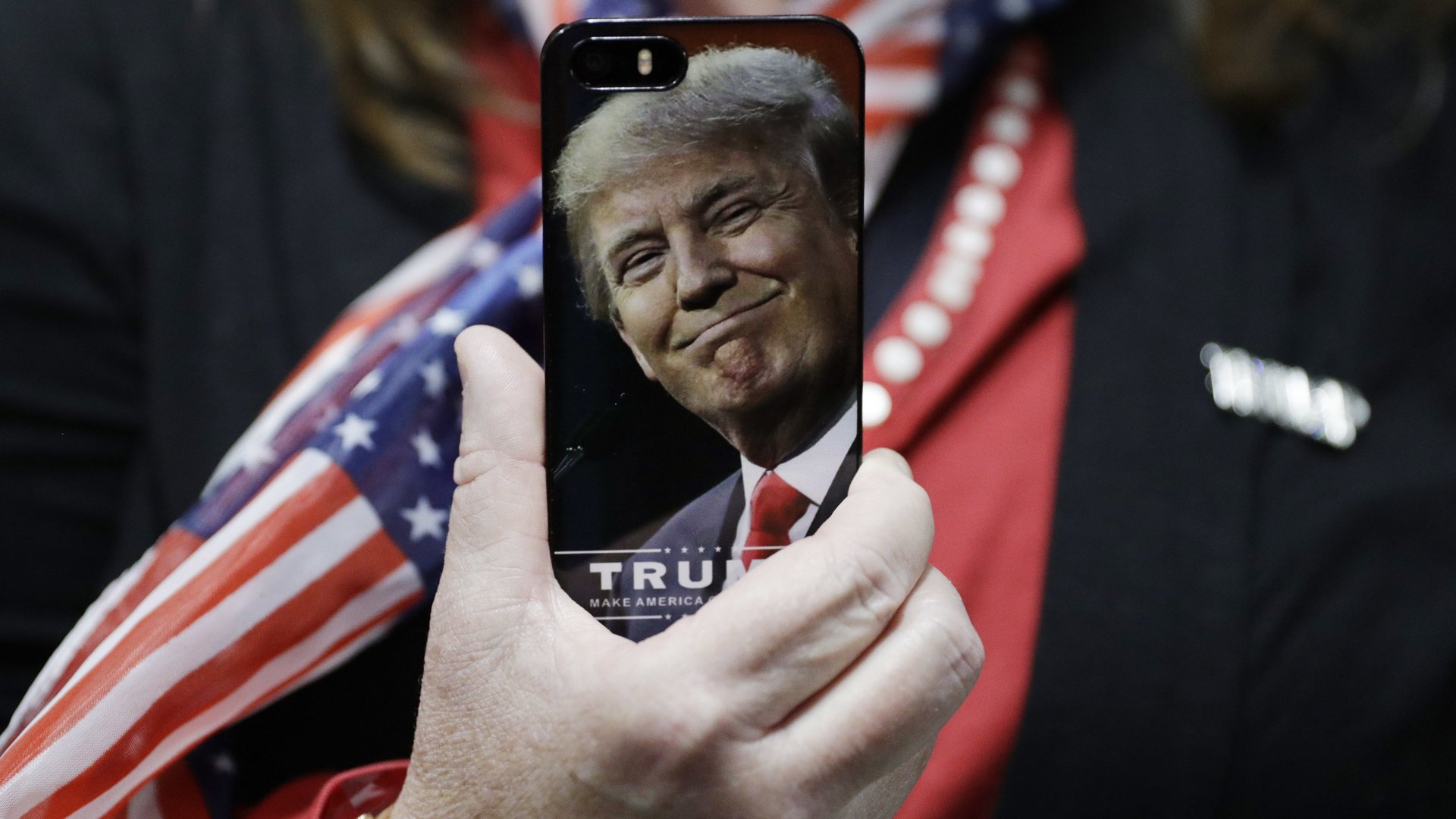The one product Trump loves most is never made in America
US president Trump loves two things (well, lots of things if you count television ratings, taco bowls, and gold): Twitter, and American manufacturing. And for the past few years he’s used the former as a bully pulpit to pressure companies to do more of the latter. Even though Trump’s inauguration means he has to give up his personal phone—and reportedly did so yesterday, in the interest of national security—there’s no reason to think he’ll give up using a phone or some other device to badger companies to make their products in America.


US president Trump loves two things (well, lots of things if you count television ratings, taco bowls, and gold): Twitter, and American manufacturing. And for the past few years he’s used the former as a bully pulpit to pressure companies to do more of the latter. Even though Trump’s inauguration means he has to give up his personal phone—and reportedly did so yesterday, in the interest of national security—there’s no reason to think he’ll give up using a phone or some other device to badger companies to make their products in America.
Ironically, one of the hardest products to make in America is one Trump loves to use the most.
As Recode pointed out yesterday, Trump and his cabinet should not use off-the-shelf smartphones, for fear that they may be hacked or snooped upon, especially during private briefings. When outgoing president Barack Obama assumed office in 2009, he gave up his treasured Blackberry, using a heavily modified smartphone that he said “doesn’t take pictures, you can’t text, the phone doesn’t work, you can’t play your music on it.”
While it’s not clear where Trump’s presidential phone was built, it’ll likely be a device that no ordinary citizen could obtain—much like his one-of-a-kind presidential limousine.
But one thing is clear: there aren’t really any consumer smartphones being made in the US. And for all of his tweeting and posturing about bringing jobs back to the US from abroad, an American-made smartphone simply doesn’t exist. Indeed, there are very few American technology companies that still make smartphones, and the ones that do, including Apple, all have their manufacturing and assembly fulfilled in Asia, through contractors such as Foxconn and Pegatron.
According to a recent interview, Trump said that Apple’s CEO, Tim Cook, has his “eyes open” to the prospect of moving manufacturing to the US (possibly because Trump’s stance on repatriating money may be in Apple’s favor). But as Quartz previously reported, the problem with manufacturing in the US is that the vast majority of Apple’s suppliers are in Asia, so shipping costs would skyrocket. On top of that the cost of labor would likely rise, given that American workers cost more to employ than those in most Asian countries.
Even if Cook agrees to move manufacturing to the US, it’ll likely take a few years to shift the process from Asia to America, and there’s no guarantee that it would even bring that many jobs back to the US: Foxconn recently replaced 60,000 workers at one of its Chinese factories with assembly-line robots. Apple is also experimenting with robots in the factory.
It’s entirely possible that Trump will bring back a lot of technology jobs to the US during his tenure—it’s just not very clear how many of them will be for humans.